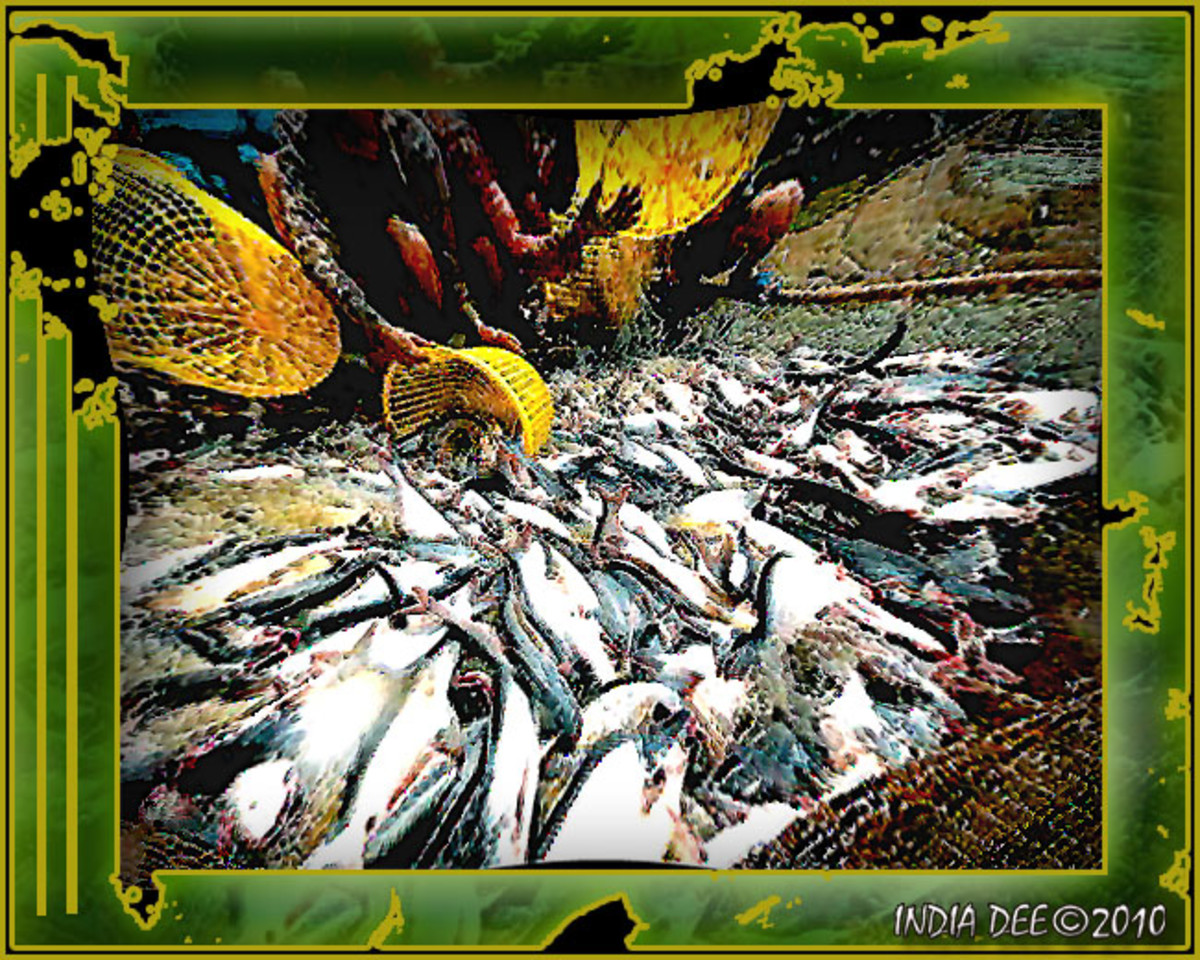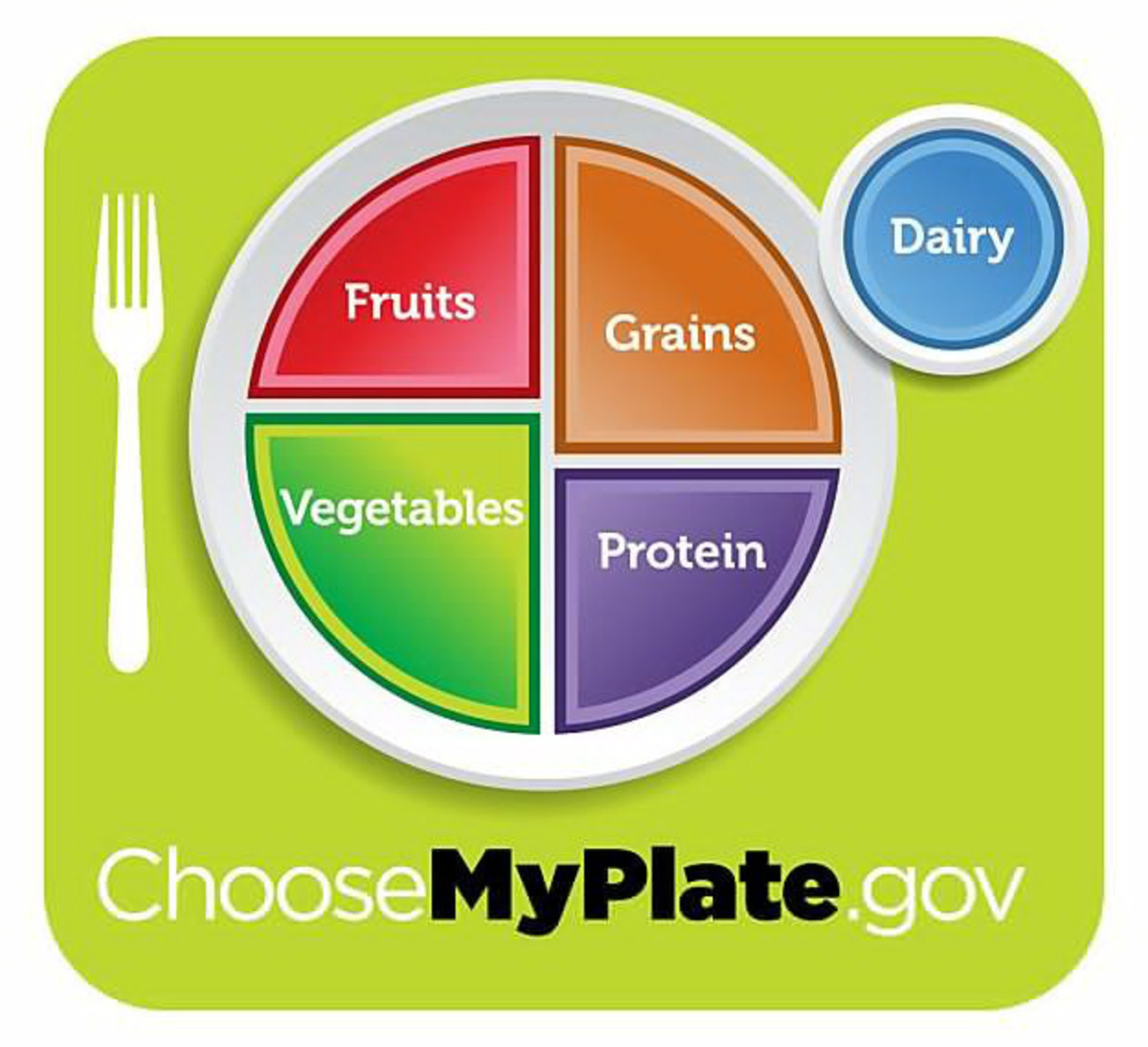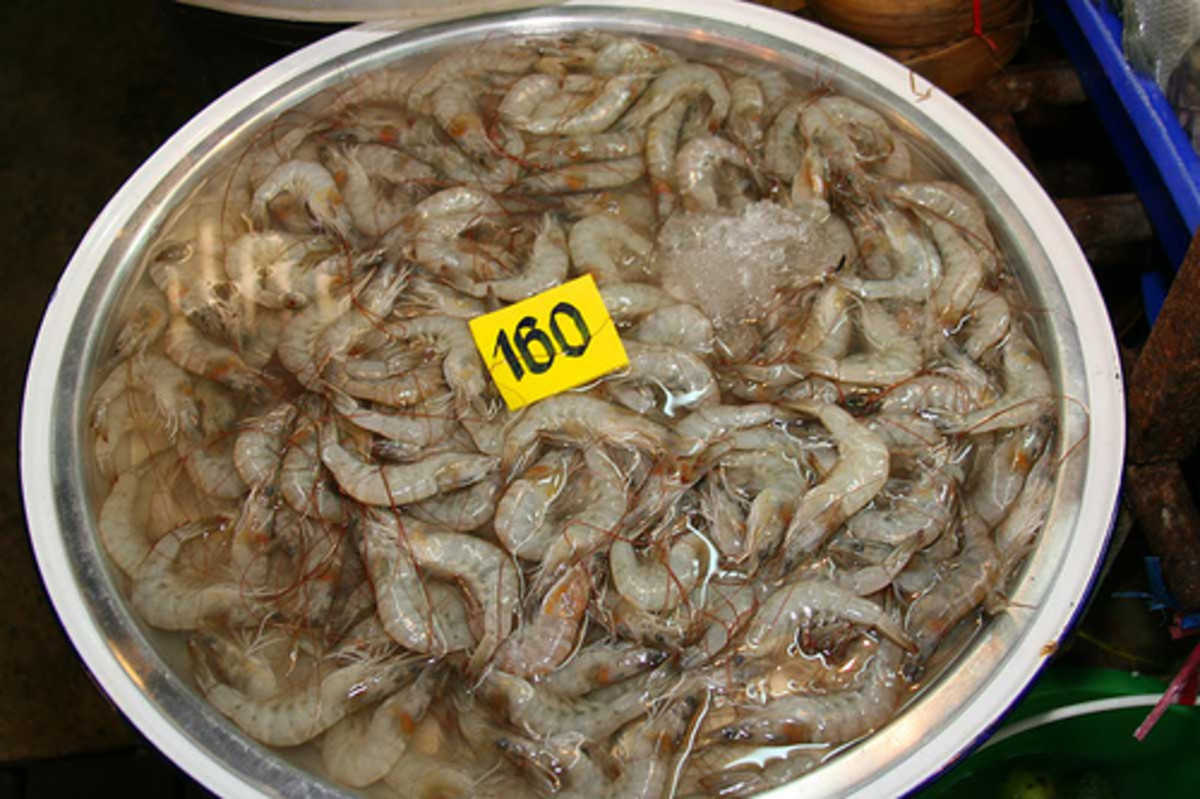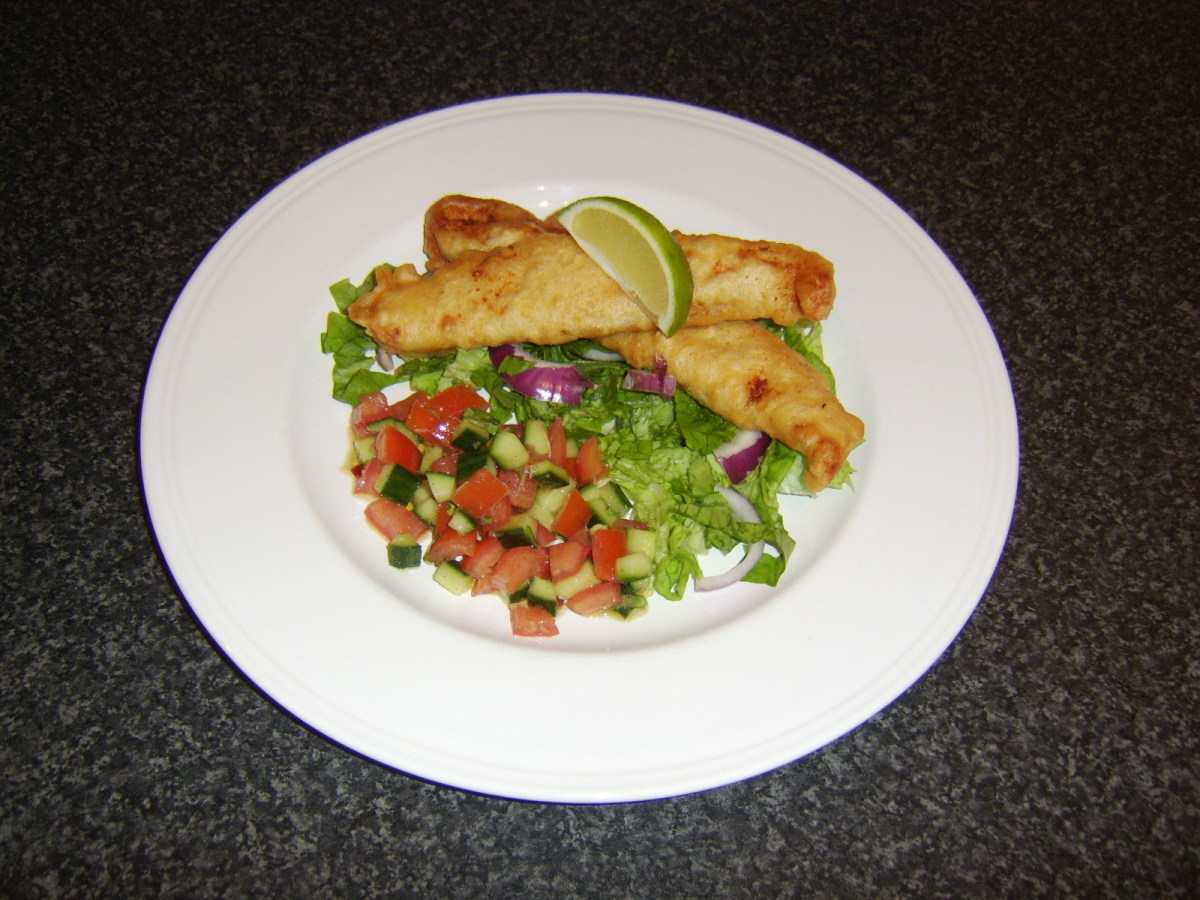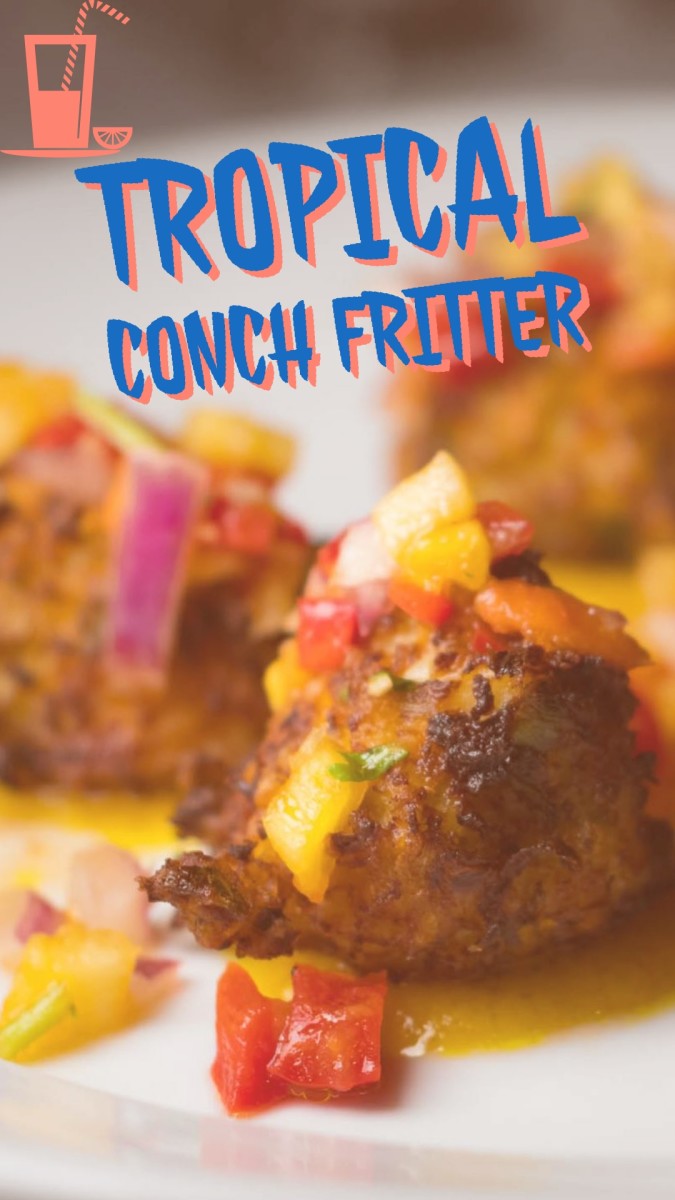Seafood Buying Guide
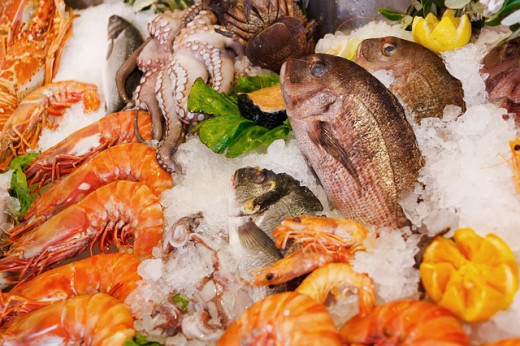
When buying seafood it is good to keep the portion size in mind as a buying guide. The following is an average portion size that is considered normal for most adults
Fish (whole) 8 to 16 oz
Fillet of fish 7 oz
Lobster (whole) 6 oz
Shrimp 8 oz
Scallops 8 oz
Other shellfish 1/2 a dozen
Seafood is not only tasty but very good for you and most dishes are easily prepared. Experts recommend that you consume some sort of seafood at least two times per week.
"Seafood is any form of sea life regarded as food by humans. Seafood prominently includes fish and shellfish. Shellfish include various species of molluscs, crustaceans, and echinoderms. Historically, sea mammals such as whales and dolphins have been consumed as food, though that happens to a lesser extent these days. Edible sea plants, such as some seaweeds andmicroalgae, are widely eaten as seafood around the world, especially in Asia (see the category of sea vegetables). In North America, although not generally in the United Kingdom, the term "seafood" is extended to fresh water organisms eaten by humans, so all edible aquatic life may be referred to as seafood. For the sake of completeness, this article includes all edible aquatic life."Wikipedia
Most seafood is high in protein and each serving gives you about 25 to 50 5 of the recommended daily allowance of protein.
Most seafood is naturally low in the total fat and usually has less than 3%. Most seafood is also naturally low in sodium with less than 100 mg.
Seafood is also high in Omega-3 fatty acids which most doctors recommend as a way to fight off heart disease and other illnesses.
Keep in mind that the cooking method will greatly affect the fat, calories and sodium content of the dish so using a sensible approach when cooking is recommended.

All seafood does not taste the same as a lot depends on texture and the region where the creatures lives as well as if they are wild caught or farm raised, fresh or frozen. However most falls in three categories; full, medium and mild and each has a different texture;
Full flavored: Bluefish, mackerel,trigger-fish,salmon,shark and oysters
Medium flavored: Whiting,crabs,trout,mullet,snapper, catfish, mahi, tuna
Mild flavored: haddock, sole,scallops,cod,lobster,shrimp, sea bass, tilapia, grouper
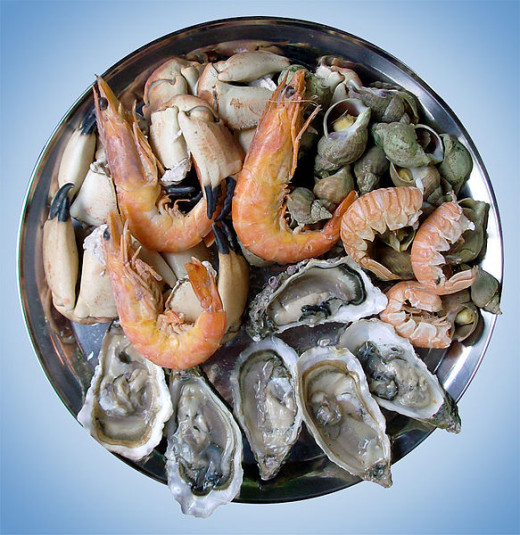
When choosing your seafood it is wise to follow some tips and look for sign of freshness. Although most retailers are diligent in how they keep their supplies mistakes do happen and you as the consumer should always be ware.
For fish look to the eyes; they should be bright and not appear as if sunken in. The gills should appear bright red and the scales should not readily fall if tugged at.
For scallops, oysters and other similar types; look for shells that are tightly closed, the shells should also not be broken and the creature should not be visible. Off course this does not apply to scallops or any other crustaceans that have been shelled and since most of these creatures have been shelled for convenience look for meat that is plump and has a rather neutral smell.
Fort live creatures like lobsters, look for shells that are hard and the creature should feel as heavy as it looks. Healthy animals should bend their backs when grabbed.
For shrimp and similar look for shells that are almost translucent with no black spots and the creatures should be rather uniform in coloration. If lightly squeezed they should spring back and not collapse.
For most fish fillets look for bright colors, moistness and above all for a good fresh smell. The meat should spring back if lightly pressed
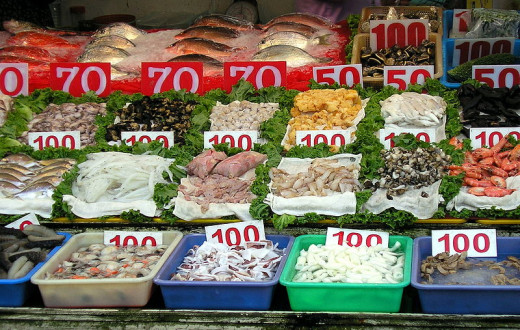
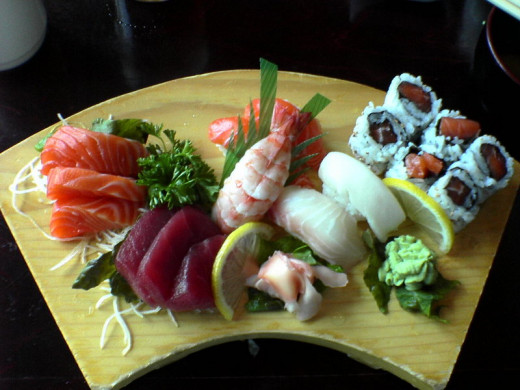
Average Maximum Nutritional Values
| Nutrition Facts | |
|---|---|
| Serving size: 1 | |
| Calories | 200 |
| Calories from Fat | 54 |
| % Daily Value * | |
| Fat 6 g | 9% |
| Carbohydrates 3 g | 1% |
| Protein 26 g | 52% |
| Sodium 590 mg | 25% |
| * The Percent Daily Values are based on a 2,000 calorie diet, so your values may change depending on your calorie needs. The values here may not be 100% accurate because the recipes have not been professionally evaluated nor have they been evaluated by the U.S. FDA. | |

- 25 Best Seafood Recipes - Cooking Light
These delightful treats from the sea are key to a healthy diet. Low in calories, sodium, and cholesterol, protein-packed seafood provides vitamins and minerals and may reduce to risk of heart disease, lower blood pressure, and improve arthritis.
- Cooking seafood is easy and there are several methods for doing this. Baking is the best method since very little fat is added and the recipe maintains most of its original moisture, especially if baked while covered. Grilling and steaming are also good methods since these keeps fats and calories to a minimum. Broiling is also a good choice for outdoor events like a BBQ. Frying is a typical method and a quick one but this adds lots of fats and calories.
© 2013 Luis E Gonzalez



